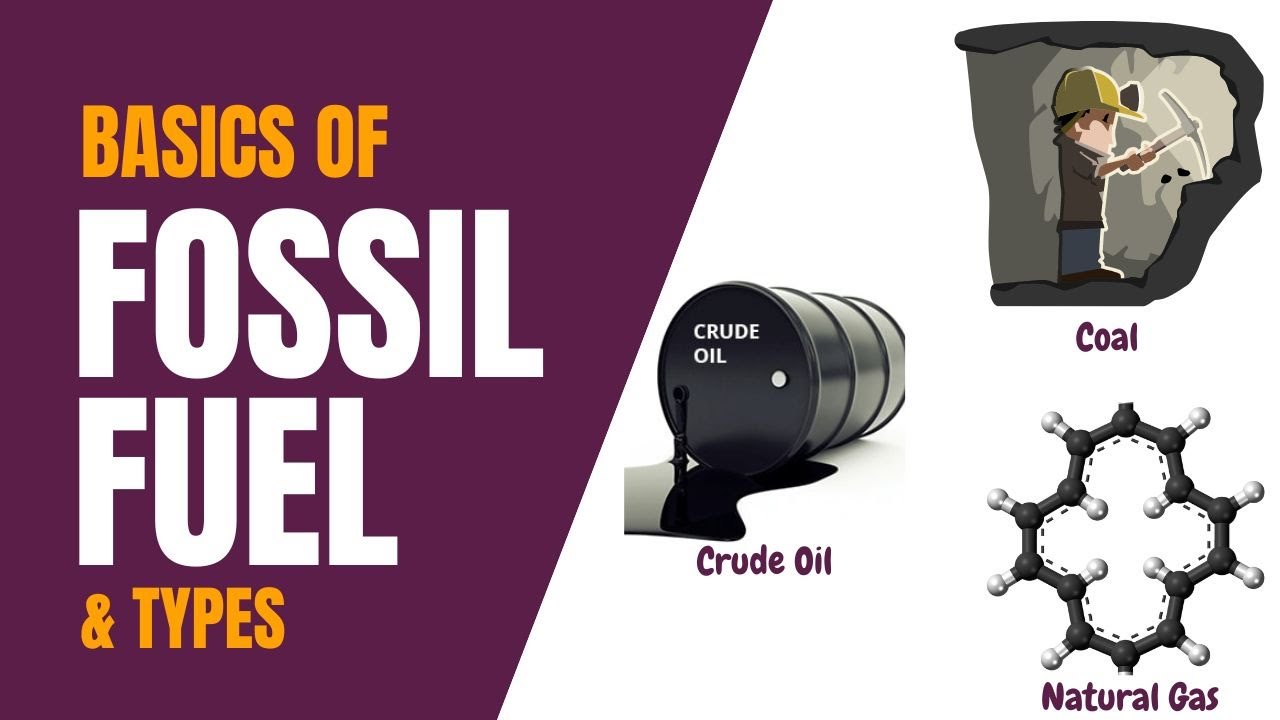What are Fossil Fuels? How are they Formed? | Oil, Coal & Natural Gas
Summary
TLDRFossil fuels, including oil, natural gas, petroleum, and coal, are non-renewable resources derived from ancient organic materials. Formed over millions of years under heat and pressure, they power vehicles, generate electricity, and fuel cooking. Integral to daily life, these fuels highlight the dependency on energy from natural gas for heating and cooking, coal for electricity, and oil for transportation. The video script underscores the omnipresence of fossil fuels and invites reflection on life without them.
Takeaways
- 🌿 Fossil fuels, including oil, natural gas, petroleum, and coal, are non-renewable resources derived from ancient organic material.
- 🚗 Gasoline, refined from oil, is a primary source of energy for vehicles such as cars, buses, trucks, and motorcycles.
- 🏡 Natural gas is utilized for heating and cooling homes, as well as for cooking, highlighting its role in domestic energy needs.
- 💡 Coal is an inexpensive resource that significantly contributes to electricity generation, powering various electronic devices.
- 🌐 Over 80% of energy consumed in the United States comes from fossil fuels, emphasizing their prevalence in the energy sector.
- 🔍 Fossil fuels originate from dead plants and animals that, after sinking to the ocean floor, were subjected to heat and pressure over millions of years.
- 🗻 Coal is typically found within sedimentary rocks, while oil is located between layers of rocks like shale.
- 💨 Natural gas, often in the form of methane, is found in pockets above oil deposits.
- 🔥 The transformation of organic material into fossil fuels involves a process of compression and heating over geological time scales.
- ⚡️ Fossil fuels are crucial for electricity production, which is essential for powering homes and a wide range of everyday technologies.
Q & A
What are fossil fuels?
-Fossil fuels are non-renewable resources such as oil, natural gas, petroleum, and coal that come from the remains of dead plants and animals.
What are some common uses of fossil fuels in everyday life?
-Fossil fuels are used for producing gasoline for vehicles, generating electricity, cooking, and heating homes.
How do fossil fuels contribute to transportation?
-Fossil fuels, specifically gasoline derived from oil, are used as a source of energy to power various vehicles including buses, trucks, motorcycles, and cars.
What role does natural gas play in household activities?
-Natural gas is used for heating and cooling homes, as well as for cooking, making it an essential resource for everyday household activities.
How does coal contribute to electricity generation?
-Coal is used as a fuel source to generate electricity, which can then power various electronic devices like TVs and computers.
What is the origin of fossil fuels?
-Fossil fuels were formed millions of years ago from dead organic material such as plants and animals that sank to the bottom of the ocean and were covered by sediments.
How does the process of fossil fuel formation involve sedimentary rocks?
-Over time, the dead organic material was covered by mud and other sediments, and the pressure and heat from these sedimentary rocks transformed the material into fossil fuels like coal, oil, and gas.
Where can coal typically be found geologically?
-Coal can be found in sedimentary rocks, often in layers that are the result of ancient swamp environments.
In what form is natural gas usually found in relation to oil?
-Natural gas, often in the form of methane, is typically found in pockets above deposits of oil.
What percentage of energy consumed in the United States comes from fossil fuels?
-Over 80 percent of all the energy consumed in the United States comes from fossil fuels such as natural gas, coal, and oil.
How would life be different without fossil fuels?
-Without fossil fuels, many aspects of modern life would be impacted, including transportation, electricity generation, and home heating, which would likely require alternative energy sources or technologies.
Outlines

Dieser Bereich ist nur für Premium-Benutzer verfügbar. Bitte führen Sie ein Upgrade durch, um auf diesen Abschnitt zuzugreifen.
Upgrade durchführenMindmap

Dieser Bereich ist nur für Premium-Benutzer verfügbar. Bitte führen Sie ein Upgrade durch, um auf diesen Abschnitt zuzugreifen.
Upgrade durchführenKeywords

Dieser Bereich ist nur für Premium-Benutzer verfügbar. Bitte führen Sie ein Upgrade durch, um auf diesen Abschnitt zuzugreifen.
Upgrade durchführenHighlights

Dieser Bereich ist nur für Premium-Benutzer verfügbar. Bitte führen Sie ein Upgrade durch, um auf diesen Abschnitt zuzugreifen.
Upgrade durchführenTranscripts

Dieser Bereich ist nur für Premium-Benutzer verfügbar. Bitte führen Sie ein Upgrade durch, um auf diesen Abschnitt zuzugreifen.
Upgrade durchführen5.0 / 5 (0 votes)






